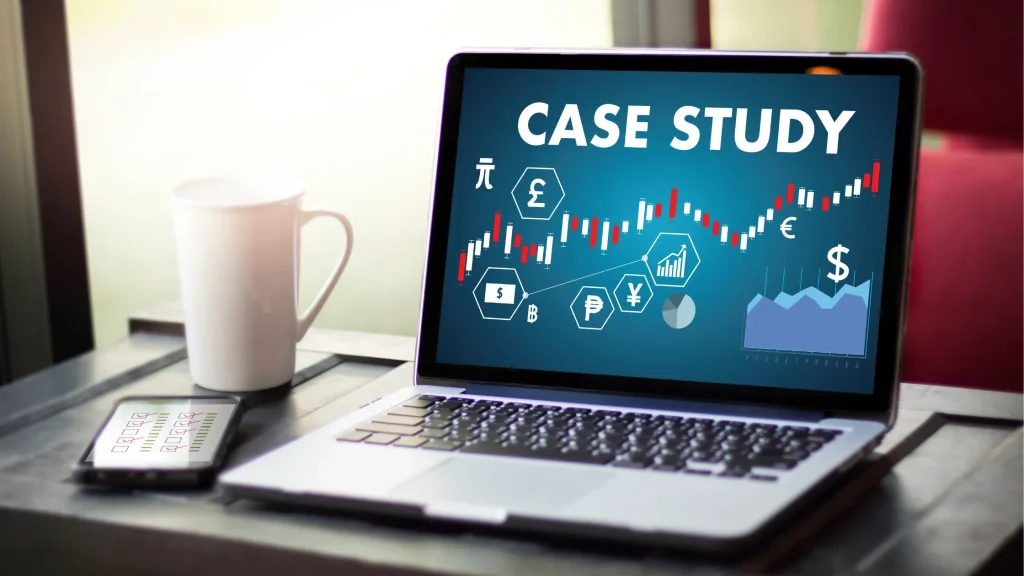In today’s fast digital world, businesses are using Search Engine Optimization (SEO) more. It helps them attract organic traffic and boost their online presence. For cybersecurity firms, SEO goes beyond website optimization. It means creating a complete strategy.
This includes on-page SEO, technical SEO, and a smart keyword strategy. In this cybersecurity SEO case study, we’ll look at how a client used these strategies. They aimed to enhance their online presence and increase organic traffic in a tough market.
What is Cybersecurity SEO?
Cybersecurity SEO means improving a website to rank better in search engines. It focuses on attracting potential customers in the cybersecurity field. This process includes on-page optimizations, off-site tactics like link-building, and technical SEO improvements.
Cybersecurity firms can improve their search traffic and visibility with smart SEO strategies. They can rank for valuable, competitive keywords in search engine results pages (SERPs).
Importance of SEO in the Cybersecurity Industry
SEO is vital for cybersecurity companies. It helps them attract qualified traffic. This means reaching potential customers who are looking for cybersecurity solutions. In 2022, cybersecurity threats grew. Companies seek trusted firms for reliable solutions. As the cybersecurity industry is highly competitive, a strong SEO strategy is vital for standing out from the competition.
Key Factors That Impact SEO for Cybersecurity Websites
Technical SEO for Cybersecurity Sites
Technical SEO is the backbone of any website’s SEO efforts. For a cybersecurity company, this means optimizing site speed, ensuring mobile responsiveness, and improving the user experience (UX). A thorough keyword research process helps identify technical issues that may be hindering site performance.
Websites with poor technical SEO often rank poorly on search engines, making it harder to attract organic traffic. An in-depth technical audit ensures that all issues are addressed, allowing the site to perform well on SERPs.
On-Page SEO Best Practices for Cybersecurity
On-page SEO refers to the optimizations that happen within a website’s pages, including content, metadata, headers, and internal linking. For a cybersecurity client, using the right keywords in meta descriptions, titles, and headings is key.
This helps improve rankings in search results. Also, adding high-quality content that targets both specific keywords and highly competitive keywords is necessary for increasing organic visibility.
Importance of Keyword Strategy for Cybersecurity Businesses
A strong keyword strategy is the foundation of any successful SEO campaign. The strategy should blend competitive and long-tail keywords. This targets various stages of the customer journey.
In a cybersecurity SEO case study, you need to:
- Research organic keywords.
- Craft content that focuses on those keywords.
- Use them on your site, including in blogs, landing pages, and product pages.
This strategy helps businesses increase organic traffic and rank for these keywords in the top rankings.
Understanding the SEO Challenges in the Cybersecurity Sector

Competitive Nature of Cybersecurity Keywords
One of the biggest challenges in the cybersecurity sector is the competitive nature of the keywords. Keywords like “cybersecurity,” “managed SIEM services,” and “cybersecurity firms” are very competitive. Big companies compete for the top positions. Achieving SEO success in this competitive environment requires a mix of technical SEO, content optimization, and off-site SEO strategies.
Balancing Technical SEO and Content for Higher Rankings
While technical SEO ensures that the site is optimized for search traffic, content optimization ensures that the site offers relevant information. Balancing both is key to achieving strong rankings. Effective on-page SEO and off-site SEO strategy development (like backlink building) work together to increase a site’s overall visibility on search engines.
Overcoming Ranking Issues in the SERPs for Cybersecurity Sites
Many cybersecurity companies face challenges when it comes to ranking in the SERPs. One common issue is broken links, which can harm a site’s SEO efforts. Identifying and fixing broken links is a critical aspect of a thorough SEO audit. Additionally, improving the backlink profile and internal linking structure can significantly boost rankings and drive more traffic.
Case Study Overview: A Cybersecurity Client’s Journey
Overview of the Cybersecurity Client’s SEO Challenges
A cybersecurity client struggled with low rankings and insufficient organic visibility in the search results. Even though the company provides top-notch services like SIEM and IDS, it wasn’t getting enough qualified traffic. The client needed an SEO agency that could help them develop a tailored SEO strategy to rank higher for keywords related to cybersecurity services.
Key SEO Tools Used in the Cybersecurity SEO Strategy
To solve the client’s SEO issues, the Miromind team used different tools. They included keyword research tools, technical auditing platforms, and analytics tools. These tools found content gaps, enhanced metadata, and boosted the backlink profile. SEO experts used tools to check keyword rankings. They tracked progress and changed strategies when needed.
Keyword Research and Strategy Applied for Increased Organic Traffic
A thorough keyword research process helped identify specific keywords that would drive qualified traffic to the website. We targeted long-tail keywords like “how SIEM services improve cybersecurity.” This helps us reach more specific questions from potential customers. Through this approach, the client was able to see a marked increase in organic traffic and improved ranking for competitive cybersecurity terms.
Technical SEO Implementation for Cybersecurity Websites
Site Architecture and Technical Optimizations for SEO
The client’s website required several technical SEO improvements. This included optimizing the site’s architecture to ensure easy navigation and a clean, efficient URL structure. An SEO audit revealed issues with page speed, mobile responsiveness, and internal linking. These problems were resolved by improving internal linking, fixing broken links, and implementing meta descriptions for all pages.
Improving Site Speed and Mobile Responsiveness
As mobile search continues to grow, mobile responsiveness became a key focus. By improving site speed and ensuring that the website loaded quickly on all devices, the cybersecurity company was able to improve user experience, which is a ranking factor for search engines. Page speed optimizations led to a significant decrease in bounce rates and an increase in organic users per month.
Security and SEO: How Cybersecurity Influences Rankings
For cybersecurity companies, website security is a top priority, not only for protecting data but also for SEO purposes. SSL encryption and secure payment gateways were implemented, which helped increase the site’s trustworthiness, an important factor in SEO rankings.
On-Page SEO Optimization for Cybersecurity Websites

Optimizing Title Tags, Meta Descriptions, and Headers
Optimizing metadata, including title tags and meta descriptions, is crucial for SEO success. The cybersecurity SEO case study involved restructuring the client’s title tags and headers to incorporate targeted keywords. This helped improve the click-through rate (CTR) and increased organic traffic to the site.
Crafting High-Quality, SEO-Friendly Content
The creation of high-quality content targeted around competitive and long-tail keywords helped the client stand out in search results. Blog posts and articles addressing common pain points in the cybersecurity industry, such as “SIEM vs IDS,” gained traction and ranked for organic keywords that were previously untapped.
Using Structured Data and Schema Markup for Better SERP Visibility
By adding structured data and schema markup, the client improved their visibility in the search results, leading to higher rankings and more traffic. This tactic helped the site achieve SEO success by making it easier for search engines to understand the content and context of the site.
Achieving SEO Success in the Cybersecurity Industry
Analyzing Keyword Ranking Improvements in Search Traffic
After implementing the new SEO strategies, the cybersecurity company saw a significant improvement in keyword rankings. They ranked for keywords with high volume such as “cybersecurity services,” “managed SIEM,” and “network security” in the top SEO positions within their industry.
Measuring Organic Traffic Growth and SEO ROI
SEO isn’t just about rankings. It’s also about ROI. The client saw a 45% increase in organic traffic over six months, resulting in higher lead generation and more qualified traffic. The ROI from these efforts was measured using SEO tools, with a focus on key metrics like organic keywords, bounce rate, and conversion rates.
Lessons Learned from the Cybersecurity SEO Case Study
This case study highlights the importance of a comprehensive SEO strategy that includes on-page, technical SEO, and off-site SEO tactics like link-building. SEO experts play a critical role in identifying gaps in content and improving the overall SEO efforts to boost website traffic and organic visibility.
Future Trends in Cybersecurity SEO
The Role of AI in Future SEO Strategies
With the rise of AI in digital marketing, SEO experts will need to stay ahead by adopting AI-powered tools to further enhance keyword research, content optimization, and technical SEO. The integration of AI into SEO will continue to evolve and improve the SEO tactics of cybersecurity firms.
SEO and Cybersecurity: Preparing for the Next Big Algorithm Update
As search engines continually update their algorithms, cybersecurity businesses must stay agile with their SEO strategies. Being prepared for changes, including new ranking factors and adjustments to how search engines handle highly competitive keywords, will be critical for maintaining top positions.